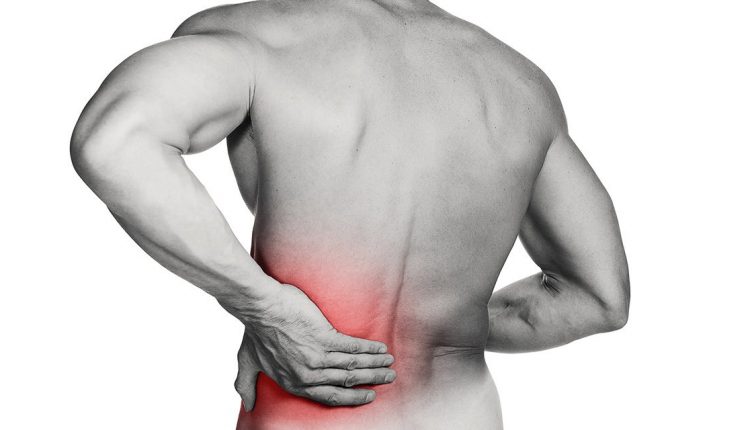
Do you suffer from lumbago? Here's when to be alarmed and what remedies you need to take
Lumbago is a form of myalgia that affects the lower back and can be caused by several factors. These include an incorrect lifestyle characterized by lack of physical activity and excessive body weight
Lumbago causes acute pain in the lumbar area, which can lead to difficulty in performing movements, especially in twisting and flexing the trunk.
The causes of lumbago can be different, some related to lifestyle while others to a genetic predisposition.
This pathology affects a large number of people and, for this reason, is the subject of numerous studies.
In Italy, almost 1 in 4 people suffer from back pain and the percentage increases in direct proportion to age, even reaching 80% in the elderly.
Here is all the information on the subject, such as causes, symptoms and remedies.
What are the symptoms of lumbago?
Lumbago manifests itself as a sharp pain in the lower back, which can often be evoked by an injury or by lifting weights.
The symptoms of lumbago can be sudden and violent unlike other pathologies with a more insidious onset.
This condition can be both acute and chronic and can recur.
The presence of lumbago can lead to an alteration in the shape of the spine, due to the inflammatory state of the muscles and the tendency to assume an antalgic position. In this case we speak of “lumbago scoliosis”.
Lifting a weight with an incorrect position can cause acute and sudden pain in the lumbar area which can lead to an inability to maintain an upright position or to perform even very simple movements.
To avoid future problems or complications, it is important to know what to do in these cases by consulting a professional.
Particular attention should be paid to risk factors that can increase the likelihood of having this condition.
Causes of Lumbago
The causes of lumbago are many.
Generally the factors that determine the appearance of this pathology can be divided into two categories: modifiable and non-modifiable factors.
The former are those elements that can be changed, while the latter include conditions on which it is not possible to intervene.
Here are the main unchangeable causes of lumbago
- Age: several studies have demonstrated the correlation between age and the presence of lumbago, as people suffering from this pathology increase in the older segments of the population. Biological aging can lead to alterations of the musculoskeletal system which can predispose to the onset of the disease.
- Gender: numerous studies are investigating the relationship between gender and this pathology. A 2012 review reported an incidence rate of 9.6% among men and 8.7% among women. Furthermore, it has been found that in women this pathology is perceived with less severe symptoms. Probably this element is due to the fact that women experience other similar or stronger pains that alter the perception of those related to lumbago (just think of the pains caused by menstruation and childbirth).
- Another non-modifiable condition related to lumbago is the morphology of the spine and body structure.
In patients suffering from spinal pathologies, it is more probable that situations of pain and cases of lumbago are created.
Different forms of scoliosis can be responsible for the pathology.
Among the modifiable causes of lumbago we recognize
Body overweight. Weight gain causes greater strain on the spine, which can lead to the development of lumbago.
A sedentary lifestyle can promote lumbago. Physical activity, performed correctly, reduces the risk of developing this pathology. Training your body prepares you for an effort which, in more sedentary individuals, can lead to lumbago.
How to prevent a lumbago
To prevent lumbago it is necessary to adopt a healthy lifestyle, maintaining the correct body weight in relation to one’s height and practicing sport on a regular basis.
Consulting a specialist is always advisable, in order to obtain efficient results and avoid complications.
Among the dietary recommendations there is that of consuming light and protein foods, able to provide energy while keeping body weight under control.
In addition, it can be useful to practice sports such as walking, running or swimming.
Finally, it is necessary to pay close attention to the position adopted during the day, if you work seated, in fact, it may be useful to buy a chair capable of keeping your back in the correct position.
Read Also
Emergency Live Even More…Live: Download The New Free App Of Your Newspaper For IOS And Android
Low Back Pain: Causes, Symptoms, Diagnosis And Treatment
How To Treat Sciatica: Better Rest Or Moderate Activity?
Positive And Negative Lasègue Sign In Semeiotics
Fibromyalgia: Where Are The Tender Points That Cause Pain On Palpation?
Fibromyalgia: The Importance Of A Diagnosis
Rheumatoid Arthritis Treated With Implanted Cells That Release Drug
Back Pain, What Are The Different Types
Back Pain: The Importance Of Postural Rehabilitation
Cervicalgia: Why Do We Have Neck Pain?
O.Therapy: What It Is, How It Works And For Which Diseases It Is Indicated
Oxygen-Ozone Therapy In The Treatment Of Fibromyalgia
Hyperbaric Oxygen In The Wound Healing Process
Oxygen-Ozone Therapy, A New Frontier In The Treatment Of Knee Arthrosis
Assessment Of Neck And Back Pain In The Patient
‘Gendered’ Back Pain: The Differences Between Men And Women
The Causes Of Acute Low Back Pain
What To Know About The Neck Trauma In Emergency? Basics, Signs And Treatments
Lumbar Puncture: What Is A LP?
General Or Local A.? Discover The Different Types
Intubation Under A.: How Does It Work?
How Does Loco-Regional Anaesthesia Work?
Are Anaesthesiologists Fundamental For Air Ambulance Medicine?
Epidural For Pain Relief After Surgery
Lumbar Puncture: What Is A Spinal Tap?
Lumbar Puncture (Spinal Tap): What It Consists Of, What It Is Used For
What Is Lumbar Stenosis And How To Treat It
What Is Low Back Pain? An Overview Of Low Back Pain


